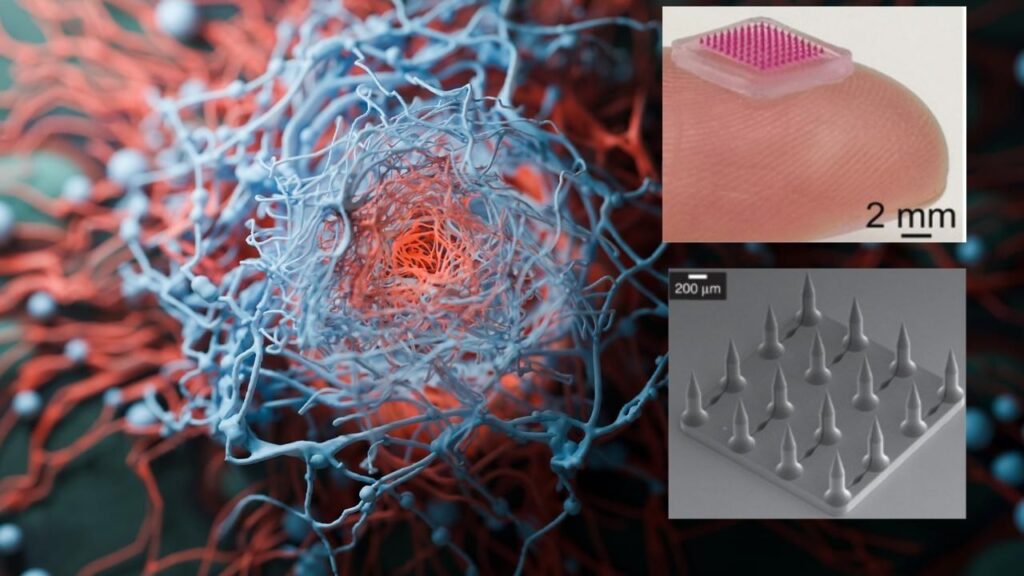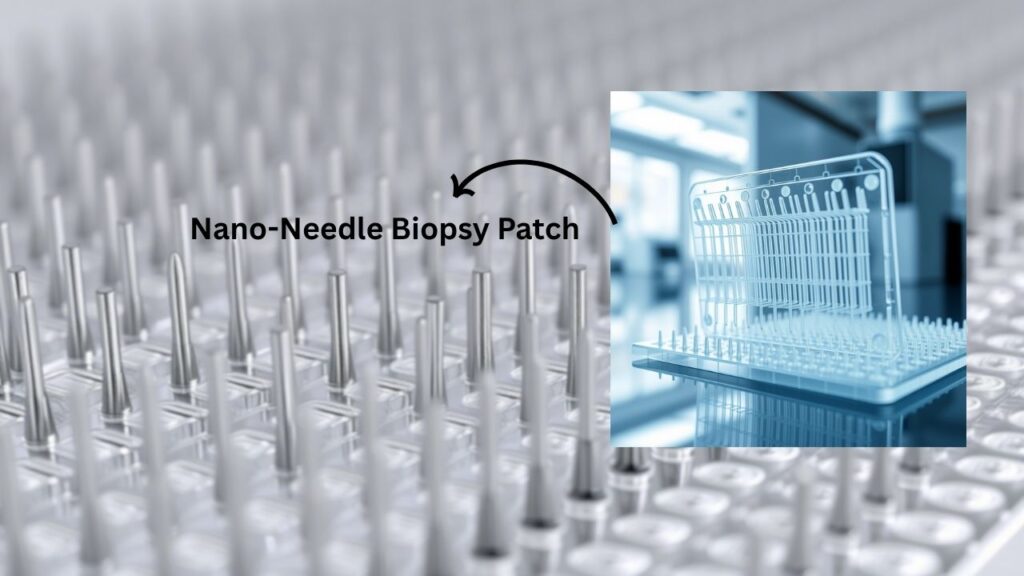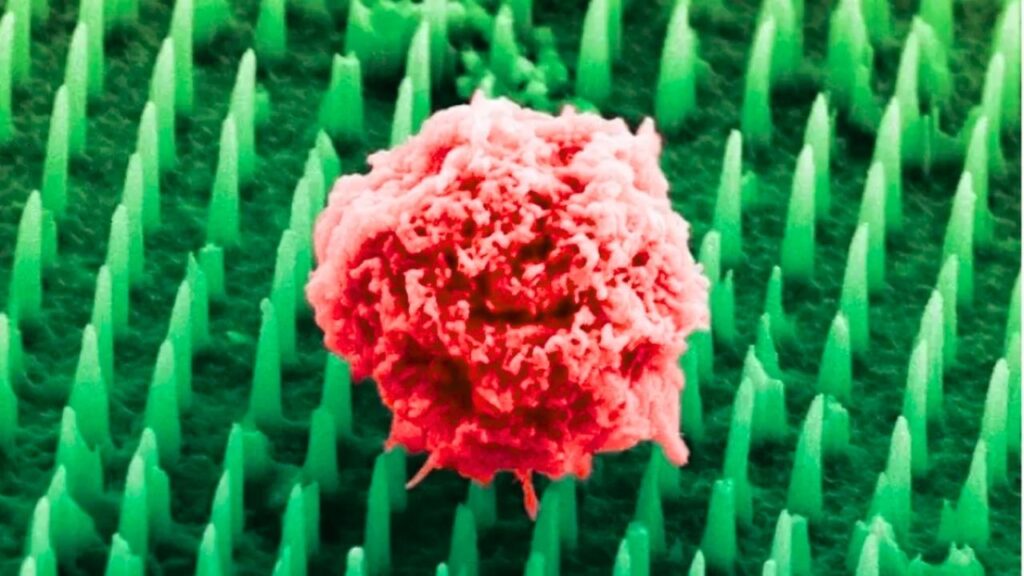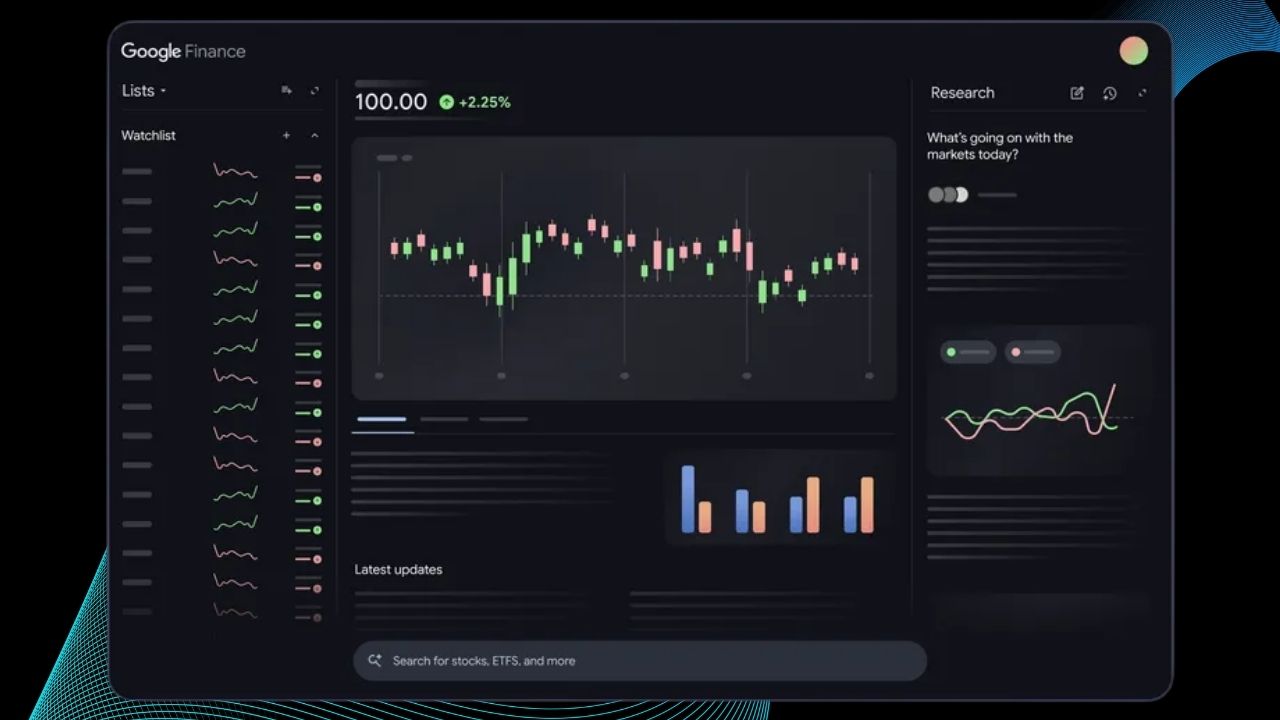Nano-Needle Biopsy Patch Could Replace Painful Tumor Sampling With Cellular Precision: Imagine a future where diagnosing cancer or other serious diseases is as simple and painless as applying a sticker. That future may be closer than you think, thanks to a groundbreaking innovation known as the nano-needle biopsy patch.

This revolutionary device could soon replace the painful, invasive biopsies that millions of patients endure each year, offering a safer, faster, and more precise way to detect and monitor diseases at the cellular level.
Nano-Needle Biopsy Patch Could Replace Painful Tumor Sampling With Cellular Precision
| Feature/Fact | Details |
|---|---|
| Technology | Nano-needle biopsy patch with tens of millions of microscopic needles |
| Pain/Invasiveness | Painless, non-destructive, and non-invasive |
| Precision | Extracts molecular “fingerprints” (lipids, proteins, mRNA) from cells |
| Repeat Sampling | Same tissue area can be sampled multiple times without harm |
| Speed | Results available in as little as 20 minutes during surgery |
| Clinical Impact | Enables real-time disease monitoring, especially for cancer and Alzheimer’s |
| Manufacturing | Made using computer chip techniques; can be integrated into bandages, endoscopes, contact lenses |
| Official Resource | King’s College London – Nanoneedle Patch Project |
The nano-needle biopsy patch represents a major leap forward in medical diagnostics. By offering a painless, non-invasive, and highly precise alternative to traditional biopsies, this technology could transform how we detect, monitor, and treat diseases like cancer and Alzheimer’s. With its ability to provide real-time, repeatable insights at the molecular level, the patch paves the way for more personalized and effective healthcare for everyone.
What Is a Nano-Needle Biopsy Patch?
A nano-needle biopsy patch is a soft, flexible patch covered in tens of millions of microscopic needles—each one about 1,000 times thinner than a human hair. Unlike traditional biopsies, which require cutting into the body to remove a piece of tissue, this patch painlessly collects molecular information from the surface of tissues without removing or damaging them.

How does it work?
- The patch is gently pressed onto the area of interest (such as a tumor).
- The nano-needles painlessly penetrate the tissue surface, extracting a rich sample of molecules—like proteins, fats (lipids), and genetic material (mRNA)—from the cells.
- This “molecular fingerprint” is then analyzed using advanced tools like mass spectrometry and artificial intelligence (AI) to give doctors a detailed snapshot of what’s happening inside the tissue at a cellular level.
Why Is This Technology So Important?
The Problem With Traditional Biopsies
A biopsy is one of the most common ways doctors diagnose cancer and other diseases. It involves removing a small piece of tissue from the body and examining it under a microscope. While effective, traditional biopsies have several drawbacks:
- Painful and Invasive: The procedure can be uncomfortable, cause bleeding, and sometimes lead to complications such as infection.
- Limited Sampling: Only a small piece of tissue is removed, which may not represent the entire area of concern, especially in complex organs like the brain.
- Not Repeatable: Doctors can’t keep sampling the same spot over and over—removing tissue repeatedly would cause damage.
- Patient Reluctance: The discomfort and risks may cause patients to delay or avoid important follow-up tests.
How the Nano-Needle Patch Solves These Problems

The nano-needle patch offers a solution to all of these challenges:
- Painless and Safe: Because the needles are so tiny, they don’t hurt or damage the tissue.
- No Tissue Removal: The patch collects only molecular information, leaving the tissue intact.
- Repeatable: Doctors can sample the same area multiple times, enabling real-time monitoring of disease progression or treatment response.
- Faster Results: In surgeries, the patch can provide results in as little as 20 minutes, helping surgeons make quick, informed decisions.
- Personalized Medicine: The detailed molecular data helps tailor treatments to each patient’s unique disease profile.
How Does the Nano-Needle Patch Work? A Step-by-Step Guide
1. Preparation
The patch is sterilized and prepared for use, just like any other medical device.
2. Application
A doctor or nurse gently presses the patch onto the targeted tissue—this could be during surgery, at a clinic, or even integrated into a wearable device in the future.
3. Sampling
The nano-needles painlessly penetrate the tissue’s surface, collecting a rich sample of molecules from the cells below.
4. Analysis
The patch is removed, and the collected sample is analyzed using mass spectrometry and AI algorithms. These tools can quickly identify:
- Whether a tumor is present
- The type and grade of the disease
- How the disease is responding to treatment
- The molecular makeup of the tissue, including important biomarkers
5. Results and Action
Doctors use this information to make decisions about diagnosis, treatment, and ongoing monitoring. In the operating room, for example, surgeons can decide right away whether to remove more tissue or not, based on the patch’s findings.
Real-World Examples and Applications
Brain Cancer Surgery
During brain surgery, time and precision are critical. The nano-needle patch can be applied to suspicious areas of the brain, providing results in just 20 minutes. Surgeons can then decide exactly which tissue to remove and which to leave, minimizing damage to healthy brain tissue and improving patient outcomes.
Alzheimer’s Disease Monitoring
The patch can be used to monitor molecular changes in the brain or other tissues over time, helping doctors track the progression of Alzheimer’s disease and adjust treatments as needed.
Personalized Cancer Treatment
By collecting detailed molecular fingerprints, doctors can better understand the unique characteristics of each patient’s tumor. This enables personalized medicine—treatments tailored to the individual, rather than a one-size-fits-all approach.
Integration Into Everyday Medical Devices
Because the patch is made using the same techniques as computer chips, it can be incorporated into bandages, endoscopes, or even contact lenses. This opens up possibilities for continuous, non-invasive monitoring of disease in real time.
Photonic Nanofabrication Enables Miniaturized Neutral Atom Quantum Networking
DNA Enabled Nanostructures Proposed To Achieve Superradiance For Quantum Light Sources
Quantum Powered AI and Weather Prediction Project Clear Sky via Quantum Drones Launches
FAQs About Nano-Needle Biopsy Patch Could Replace Painful Tumor Sampling With Cellular Precision
What diseases can the nano-needle patch help diagnose?
The patch is especially useful for diagnosing and monitoring cancers (like brain cancer), Alzheimer’s disease, and potentially other inflammatory or infectious diseases.
Is the nano-needle patch available for patients now?
As of June 2025, the patch has shown promising results in preclinical studies and is being further tested. It is not yet widely available but could be in the near future.
How does the patch compare to a regular biopsy in terms of accuracy?
In studies, the patch was able to match the performance of traditional tissue analysis in identifying disease and predicting its grade, with the added benefit of being non-destructive and repeatable.
Will it hurt to use the nano-needle patch?
No. The nano-needles are so thin that patients do not feel pain or discomfort when the patch is applied.
Can the patch be used more than once on the same patient?
Yes! One of the biggest advantages is that the same area can be sampled multiple times, allowing doctors to monitor changes over time without causing harm.
Who invented the nano-needle patch?
The patch was developed by scientists at King’s College London, led by Dr. Ciro Chiappini, and detailed in the journal Nature Nanotechnology.
Practical Advice for Patients and Professionals
- For Patients: If you or a loved one faces a biopsy, ask your doctor about new, less invasive options on the horizon. Stay informed about clinical trials and emerging technologies.
- For Healthcare Professionals: Keep up with the latest research on nano-needle technologies. These patches could soon become a standard part of your diagnostic toolkit, enabling safer, faster, and more precise care.
- For Researchers: Explore how nano-needle patches can be adapted for other diseases, or integrated into wearable devices for continuous monitoring.










